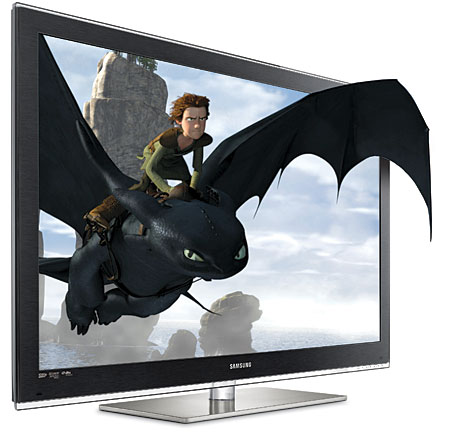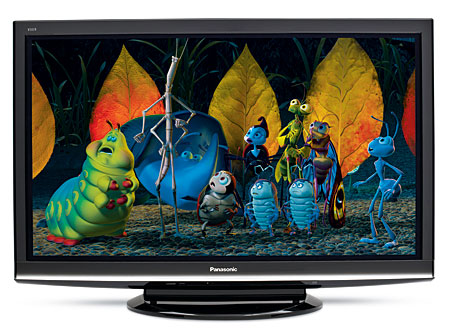How to Choose a Flat Panel
When we wrote this feature for last year’s HDTV Buyer’s Guide issue, the flat-panel HDTV market was much simpler. 3D was nowhere in sight, and much of our analysis boiled down to the pros and cons of LCD and plasma technology. This year, 3D is just one of the newer wrinkles in the market. The number of plasmas in the market isn’t what it was just a few years ago, but plasma is not only hanging on, the best plasmas still stake a legitimate claim to being the best flat panels available. With LCDs, manufacturers are aggressively using the backlighting techniques to market the sets. In fact, LCDs are getting more and more sophisticated and offering serious potential value. There’s a lot to learn, so let’s get going.

3D for You and Me?
The emergence of 3DTV in the HDTV market has been sudden and dramatic. Within a couple of generations, 3D will probably be ubiquitous in the flat-panel HDTV market (or close to it), and there probably won’t be a premium attached. For now, 3D is a choice, and it comes at something of a premium. The sets are a bit more expensive than their non-3D counterparts (though not outrageously so in many cases). In addition to that, the required active 3D shutter glasses are currently running nearly $150 per pair. 3D program material is ramping up on the Blu-ray Disc format as well as cable and satellite, but it’s still quite limited. Blu-ray 3D is the best-in-class, full HD 3D experience, but unfortunately some of the most desirable 3D movies are available only as exclusives with 3DTV and Blu-ray player bundles from one manufacturer or another. We hope to see this practice end sooner rather than later. But perhaps the trump card in 3D’s favor is that our reviews so far have revealed some truly outstanding sets that would have earned a Top Pick designation for their 2D performance alone. To wit, Panasonic’s 3D plasmas have the best blacks in Panasonic’s line, which will improve every 2D image you see from your beloved 2D sources like Blu-ray Disc, DVD, cable, or satellite.
If you decide to adopt early on 3D, there are some options you should look out for as well. As mentioned, 3D source material is scarce and will likely remain so in the near term. Some, but not all, 3DTVs offer 2D-to-3D conversion. While it’s no substitute for the real thing, the early returns suggest that this shake-and-bake 3D can be surprisingly effective with some program material and especially with computer-animated titles. 3DTVs from Samsung, Sony, and Toshiba offer 2D-to-3D conversion, while sets from LG and Panasonic’s first 3DTV sets do not. As we were going to press, Panasonic announced new sets with a 2D-to-3D feature with its GT25 series 3D plasmas. You might want to get some more 3D bang for the bucks you’ve spent, and being able to convert 2D material to 3D could be a serious value-add.
Sony went an interesting route in offering some HDTVs that are 3D ready. You can buy the set, presumably for a little less money, and then add the 3D transmitter and glasses separately at a later date. You’re futureproofed if this whole 3D thing takes off, but you don’t have to shell out for the spiffy glasses just yet if you don’t want to. On the other hand, manufacturers are getting aggressive with pricing bundles that include Blu-ray 3D players, exclusive Blu-ray 3D movies, additional sets of active 3D shutter glasses, and more. Although we dislike the practice of movie exclusives (feels like the format war all over again), which manufacturer has the best exclusive Blu-ray 3D titles might play a role in your decision—at least for a while.
Plasma or LCD?
In many aspects of performance (color, detail, and longevity), there’s little difference between the latest LCDs and plasmas. Until now, the most obvious difference between them has been how well they reproduce deep blacks and shadow detail, and plasma has long held the upper hand. Plasmas are self-illuminating and therefore need no backlight. Since the signal that energizes each plasma pixel may be shut off, a plasma set can produce better blacks than conventional LCDs. The latter use large fluorescent tubes for their backlights. The function of the LCDs is to block this light selectively in order to produce an image. LCDs cannot completely block light. Because of this, they have, until now, produced black levels and shadow detail that range from mediocre to dismal. This limitation is rarely visible with a bright image in a well-lit environment. You won’t likely spot it in a video showroom, but it can be critical for movie watching at home. Replacing the conventional fluorescent backlighting on an LCD set with LEDs (light emitting diodes) has improved LCD performance in this regard. There are now a variety of LED-backlit LCDs on the market that use twisty technology to get the best performance from LCDs.

Still, you might want to choose a plasma if there are fussy movie watchers in your family or people who will be sitting significantly off axis to the screen. If you’re a heavy movie or TV drama watcher and you generally turn the lights down or off for serious viewing, you’ll want great black levels and a state-of-the-art contrast ratio. You’ll likely be happiest with the best plasma you can afford—or an LCD set with LED backlighting and local or precision dimming.
If you’re more into sports, news, documentaries, and sitcoms than movies, and you always watch in bright room lighting, day or night, an LCD—even a conventional one—might be a good choice. For a sports-heavy diet, you should look for an LCD with the lowest possible motion lag, possibly with 120-hertz or higher capability. Reduced motion lag will also be important to gamers, who will need to balance their options between plasma’s smooth motion and LCD’s immunity to burn-in.
LCD HDTV or LED HDTV?
OK, trick question. LED HDTVs are LCD HDTVs. Sets with LED backlights are being promoted as LED HDTVs, as if they were some fundamentally new form of television. They are not. The LEDs are simply used for the backlighting. Regardless of how active and sophisticated that backlighting might be, these sets still use LCD technology to produce the image. But the LED lighting is being employed in dynamic new ways to improve performance. The first, and to date the most effective is a technique called local dimming. Clusters of LEDs are arranged in zones behind the screen and manipulated on a dynamic, scene-by-scene basis to darken the dim areas of an image and leave brighter areas relatively untouched. In effect, the locally dimmed LED backlights enhance the LCDs’ ability to block light by reducing the amount of light they must deal with in the first place. This technology can dramatically improve black level, shadow detail, and contrast, which results in dark scenes that can compete with those from any plasma.
- Log in or register to post comments

















































